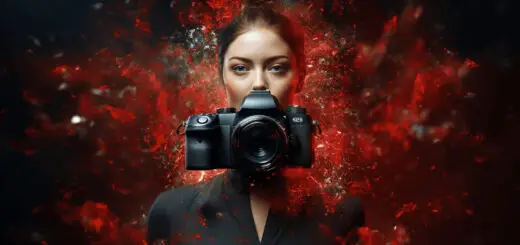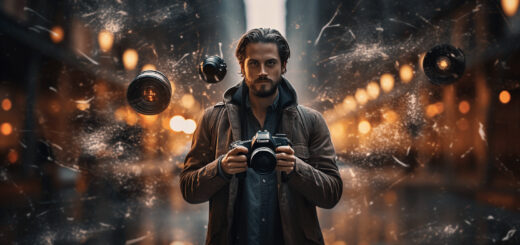Redefining Visual Storytelling: Artificial Intelligence and Modern Photography
Photography has always been a means of capturing moments and telling stories. With the advent of artificial intelligence (AI), photographers now have a powerful tool at their disposal to take their storytelling to new heights. In this article, we will explore how AI is transforming the world of modern photography and how it is redefining the way we create and share visual stories. We will look at various aspects of AI in photography, its impact on the industry, and how photographers can utilize these advancements in their work.
Table of Contents
- AI-Enabled Cameras
- AI in Post-Processing
- Image Recognition and AI
- AI in Stock Photography
- AI-Powered Learning Resources
- Ethical Considerations
- Future Possibilities
- Frequently Asked Questions
AI-Enabled Cameras
AI has been rapidly integrated into camera systems, offering intelligent features that aid photographers in capturing the perfect shot. The latest models now incorporate AI-driven autofocus systems, facial recognition, and advanced tracking capabilities, allowing photographers to focus on their subject and composition while the camera intelligently adjusts settings for optimal results.
Here are some AI features currently available in modern cameras:
- Real-time Eye AF: This feature uses AI technology to track and maintain focus on a subject’s eyes, ensuring sharp and clear portraits.
- Subject Recognition and Tracking: AI-driven algorithms enable cameras to detect and track various subjects, including animals and objects, making it easier for photographers to capture dynamic scenes.
- Scene Optimization: Some cameras can now analyze a scene’s characteristics and adjust settings accordingly, improving overall image quality and color accuracy.
AI in Post-Processing
Artificial intelligence has made significant strides in the world of photo editing and post-processing, enabling photographers to enhance their images with greater ease and precision. AI-powered software can now perform various tasks, such as noise reduction, detail enhancement, and even advanced retouching, with a few simple clicks or sliders.
Examples of AI-driven post-processing tools include:
- AI-Powered Noise Reduction: AI-based algorithms can intelligently target and remove noise from images while preserving details and sharpness.
- AI Sky Replacement: Using AI, photo editing software can automatically detect and replace skies in images, making it easier to achieve desired effects, such as enhancing a dull sky or adding stunning sunsets.
- AI Retouching: Advanced retouching tools powered by AI can save photographers time by automating complex tasks such as removing blemishes, making fine adjustments to skin tones, and even reshaping facial features.
Image Recognition and AI
AI has enabled significant progress inimage recognition, making it possible to identify, analyze, and categorize visual content automatically. This technology has wide-ranging applications in photography, from organizing personal photo libraries to improving the searchability of online image databases.
Key benefits of AI-powered image recognition include:
- Automatic keywording and tagging: AI can analyze the content of images and suggest relevant keywords, making it easier for photographers to organize and find their work.
- Visual search: Online platforms can use AI image recognition to enable users to find images based on their visual attributes, rather than relying solely on text-based search terms.
- Content-based image analysis: AI can analyze and assess images’ technical and aesthetic qualities, offering insights and suggestions for improvement.
AI in Stock Photography
The stock photography industry has embraced AI to improve various aspects of its operations, from image curation to customer experience. AI tools can analyze large collections of images, automate keywording and categorization, and even predict the popularity of specific photos. This helps stock photography providers streamline their processes, reduce manual work, and deliver personalized offerings to their customers.
AI’s impact on stock photography includes:
- Automated Curation: AI-driven algorithms can quickly and accurately evaluate photos for inclusion in stock photo collections, ensuring high-quality and diverse offerings.
- Dynamic Pricing: AI can analyze trends and historical data to help providers set optimal pricing strategies for their images.
- Personalized Recommendations: Stock photo platforms can utilize AI to analyze user behavior, providing tailored content suggestions based on individual preferences and browsing history.
AI-Powered Learning Resources
AI-driven solutions are also available for those looking to learn and improve their photography skills. From image analysis to personalized lessons, AI can help photographers grow and develop their creative vision.
Examples of AI-powered learning resources include:
- Image Critique and Feedback: AI-driven algorithms can analyze photographers’ work, providing feedback on technical and aesthetic aspects for improvement.
- Personalized Learning: AI can identify areas of strengths and weaknesses in photographers’ skills, offering tailored learning resources and exercises to help them excel.
- Interactive Tutorials: Some AI-powered learning platforms provide photographers with interactive tutorials, simulating real-world scenarios to practice and refine their techniques.
Ethical Considerations
As the capabilities of AI in photography continue to expand, ethical concerns must be addressed. Issues related to privacy, data security, creative integrity, and the potential impact on the job market require thoughtful consideration and informed debate.
Photographers and industry professionals should be aware of the following ethical considerations:
- Privacy and Surveillance: AI-driven facial recognition and tracking technologies pose potential privacy risks, as cameras become capable of identifying and monitoring individuals in public spaces.
- Data Security: As more sensitive information is processed by AI algorithms, photographers and organizations must take adequate measures to protect personal data and prevent unauthorized access.
- Job Displacement: The increasing automation of tasks withinthe photography industry may lead to job displacement and require photographers to adapt and develop new skills.
- Manipulation and Misrepresentation: AI-driven image editing tools allow for increasingly effective manipulation of visual content, raising concerns about the authenticity of images and the potential spread of misinformation.
Future Possibilities
Despite the challenges and ethical concerns, the future of AI in photography appears promising. With ongoing advancements in technology and a commitment to addressing ethical considerations, photographers can look forward to exciting new tools and opportunities for creative expression.
Some potential future developments in AI and photography may include:
- Virtual Reality and 3D Imaging: AI could play a significant role in the development of virtual reality-based photography and 3D image processing, creating new possibilities for immersive storytelling.
- AI-Assisted Composition: AI algorithms could analyze scenes in real-time, suggesting optimal framing and composition based on the photographer’s creative style and preferences.
- Adaptive Camera Systems: Cameras may become more adaptable, learning photographers’ preferred settings and automatically adjusting to their needs based on AI analysis of previous work.
Frequently Asked Questions
- What is the role of AI in modern photography?
- Artificial intelligence has a growing presence in modern photography, with applications in camera technology, post-processing, image recognition, stock photography, and learning resources. AI-driven tools are helping photographers capture better images and work more efficiently.
- Are there ethical concerns related to AI in photography?
- Yes, there are ethical concerns, such as privacy and surveillance, data security, job displacement, and the potential for image manipulation and misrepresentation. These issues require ongoing discussion and balanced consideration as AI technology continues to evolve.
- What are some possible future developments in AI and photography?
- Potential future developments include advancements in virtual reality and 3D imaging, AI-assisted composition, and adaptive camera systems that learn photographers’ preferences and automatically adjust settings.
- How are AI-enabled cameras assisting photographers with their work?
- AI-enabled cameras offer features such as real-time Eye AF, subject recognition and tracking, and scene optimization, allowing photographers to focus on their subject and composition while the camera intelligently adjusts settings for optimal results.
- What are some AI-driven post-processing tools that photographers can use?
- AI-powered post-processing tools include noise reduction, sky replacement, and retouching, allowing photographers to enhance their images quickly and easily with advanced algorithms.
In conclusion, AI is revolutionizing the way photographers capture and process images while challenging the industry to consider and address ethical concerns. As technology continues to advance, the possibilities for visual storytelling and creative expression expand, offering photographers a wealth of resources and opportunities to enhance their work.



